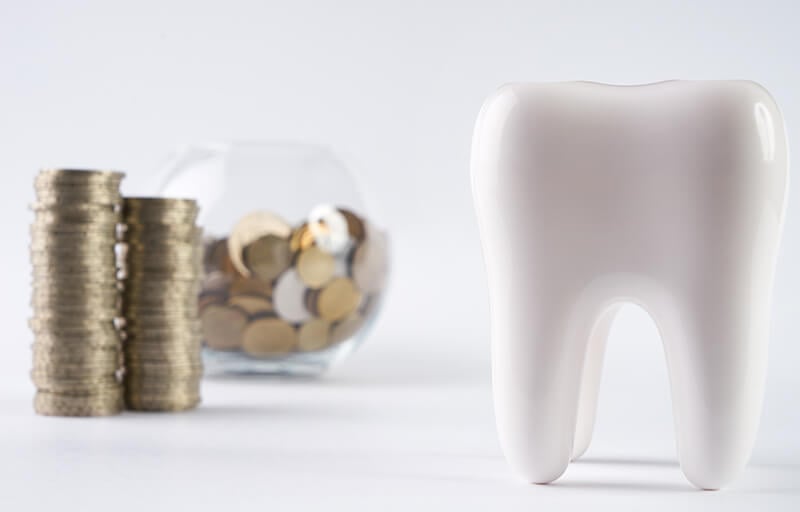You’ve seen the mentions on TV, read the stories online and in the news, checked out the celebrity endorsements – dental savings plans are getting a lot of attention lately. And you’re wondering – do these plans really live up to their promise? Is it worth joining one, or can I save more with dental insurance or by paying for dental care out of my own pocket?
The truth is that we can’t tell you, with 100% confidence, that dental discount plans are right for you. If you get dental insurance for free from your employer, then you’re probably good to go. And if your dentist is really enthusiastic about giving discounts for cash payments, you may save more by paying out of pocket.
So who should join a dental savings plan? That’s an easy question to answer. If you say yes to one or more of the below statements, and you want to save between 10%-60% on your dental care needs, a dental savings plan is the right choice for you.
- You don’t have dental insurance, or would have to pay for their own dental insurance
- You have dental problems, like missing or loose teeth, that you want to get fixed
- Your dentist has advised you that the care you need will cost about $1,500 or more
- You or your child needs orthodontic treatment to straighten teeth
- You want cosmetic dental treatments such as tooth whitening or overlays
- You want dental implants
- You need to replace missing teeth with a bridge or dentures
- You need expensive dental care – like a root canal and a crown – ASAP
Dental Insurance vs Dental Savings Plans
So you read the list above, and you’re wondering why dental insurance won’t save you as much as a dental savings plan in those specific cases, right? After all, dental insurance has been around for decades, and it has been proven to reduce the cost of dental care. So why a dental savings plan, when you could just buy dental insurance?
Here’s why: because dental insurance is great at saving you money on preventive care. If your dental care needs don’t ever extend beyond getting regular checkups and cleanings, and maybe getting the occasional cavity filled, you can purchase dental insurance and break even – or even come out a little ahead. That’s because dental insurance is fully focused on keeping your teeth healthy. You get the biggest savings on basic (and low-cost) care that’s intended to keep your mouth, gums and teeth in great shape.
But if you need costly restorative treatments to address dental problems, dental insurance may let you down.
See how much you can save with a dental savings plan.
Use our calculator below >
What Does Dental Insurance Cost and Cover?
The typical cost of an individual dental insurance policy is around $350 a year. For a family, the cost is around $550, annually. The price you pay for your dental insurance is called the “premium.”
Most dental insurance policies are “100/80/50” plans. That means the plan covers 100% of the cost preventive care such as cleanings, checkups and x-rays. So lets do some math: If you pay out of pocket for two checkups and cleanings and a set of X-rays, your cost, on average, will be around $375-$400, according to the American Dental Association. So, with a dental insurance policy, you’re basically pre-paying for your essential preventive care, with a little assurance built in that if you need a couple of fillings, or chip a tooth, you’re also covered.
The majority of dental insurance plans also cover 80% of basic treatments such as fillings and 50% of more complex procedures such as root canals and crowns.
Wow, 80% and 50% off dental care sounds great, right? But it’s not that simple.
Dental Insurance: Waiting Periods and Annual Maximums
Before you buy dental insurance, check the annual maximum coverage provided by your plan, also known as the “annual cap.” Dental insurance policies generally limit coverage to $1000 -$1,500 a year. When your dental costs for most procedures go over that limit, you then have to pay for your own dental care for the rest of the year.
Given that the average cost for a crown is $750-1200, and the cost of a single implant starts at $1500, you can exhaust your annual dental allowance fairly quickly. Additionally, check to see whether a maximum amount is an annual maximum or a lifetime maximum. You’ll likely see lifetime maximums only for lengthy services such as orthodontia (braces) or long-term issues such as dentures (which typically need to be adjusted, repaired or replaced over time).
Annual maximums are what makes dental savings plans a better choice if you need more than basic preventive care. You also need to factor in waiting periods – your dental coverage for costlier treatments such as bridges, root canals, crowns, and dentures doesn’t kick in for 6-12 months after you’ve purchased your dental insurance. Some insurance providers will waive the waiting period if you’re switching from another dental insurance plan, check the plan details carefully.
The Advantages of Dental Savings Plans
Dental savings plans are an affordable alternative to traditional dental insurance. And plan members report saving an average of 50%* on their dental care.
Dental savings plans activate quickly – within 72 hours of purchase – and have no annual caps, no waiting periods, and no restrictions on pre-existing conditions. You simply show your membership card to any of the 140,000+ participating dentists and receive reduced rates at the time of service.
The average annual cost of a dental savings plan is between $80 and $150 for an individual (significantly less than you’d pay for dental insurance). For a family plan, the average cost is between $165 and $200. Factor in that many dental savings plans also offer discounts on treatments that dental insurance typically doesn’t cover, such as dental implants and cosmetic treatments. And that dental savings plans often include discounts on prescriptions, vision and hearing care, chiropractic treatment and other health and wellness services at no extra cost.
Dental discount plans can make dental care affordable for those who don’t have dental insurance, who want to save on services not covered by their insurance, or who have exhausted their annual benefits.
There are plans for every dental care need and budget. Want help choosing the best plan for you? Give us a call at 1-833-735-0399 or use our calculator below for a quick peek at how much you can save.
*Discount Health Program consumer and provider surveys indicate average savings of 50%. Savings may vary by provider, location, and plan.

 Login
Login

